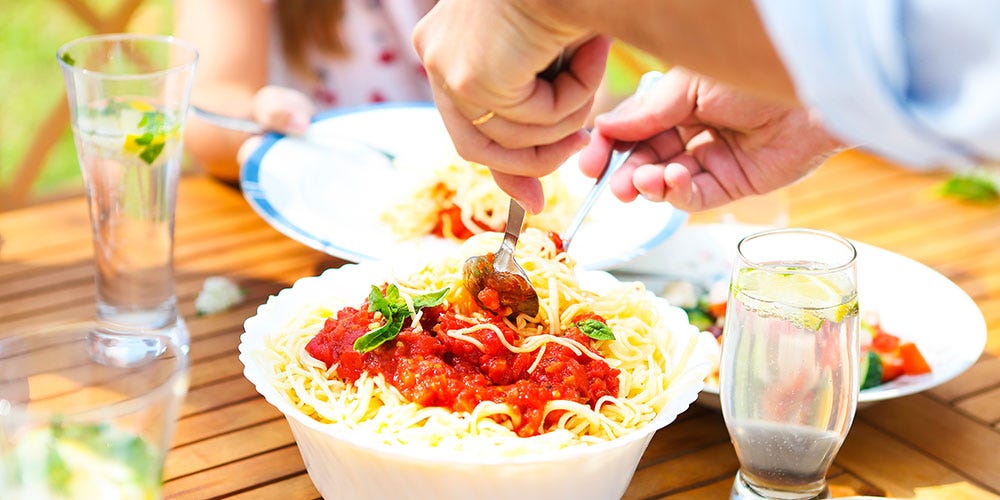I first became aware of the link between food and health when I was diagnosed with high cholesterol in eighth grade. While the diagnosis was likely due to a genetic predisposition, growing up in a big Italian family of eaters certainly didn’t help.
With that diagnosis, I had to make a lot of changes to my diet: I stopped eating veal cutlet, stopped eating full-fat dairy, stopped using butter, and decreased my portions. Looking back, I wouldn’t advise a 13-year-old to do what I did. Instead, I would have someone focus on what to eat (rather than what to cut out) like veggies with olive oil and incorporating foods high in monounsaturated fatty acids and omega-3 fatty acids, like salmon. That’s the kind of advice I give people in my book, Women’s Health’s Body Clock Diet. Regardless, within a month of making those changes, my cholesterol dropped 50 points and I realized how important those choices were.
At family dinners, there’d be one meal for me and one meal for the rest of my family. They ate huge portions and processed foods and what I couldn’t understand was why they weren’t also changing and eating the way I was. Growing up, my nutritional knowledge was very limited.
A few years later, my uncle was diagnosed with diabetes. He brought me to his dietitian appointment and I became fascinated. She ended up letting me intern for her and that’s where my passion as a dietitian was ignited. All the men in my family were eventually diagnosed with diabetes, and that’s served as a major motivator for me to lead a healthier lifestyle.
Once I went to school to become a dietitian, I learned that I could have all the foods my family was eating in moderation. When I was a kid, I saw my diet as restrictive and felt I was surrounded by foods I couldn’t have (which, of course made me want them more). Once I learned to stop categorizing food as “good vs. bad,” it took all the food’s power over me away. That’s one of the most important lessons in Women’s Health’s Body Clock Diet.
Now, in order to enjoy all the foods I love without the guilt, I follow some simple guidelines. At a big family dinner, I think it’s wise to make two plates—one for right now and one for later. That way, you can pace yourself and don’t feel like you have to go all-out. This also works great when there are multiple desserts or sides and you want to try all of them—you can have the pumpkin pie tonight and the apple pie tomorrow.
I’ve also found that it’s important to set self-care boundaries around family if they’re especially pushy about food. If a polite “no, thank you” doesn’t work, say you’re full but happy to take a plate home with you. And if you’re truly not interested in the food, you can give it to your roommate or a coworker the next day. You can read more of my tips on moderation in WH’s Body Clock Diet.
Another tip for these gatherings is to go easy on the wine. Ideally, you want to wait to have alcohol until after you’ve eaten or at least during your meal. Never drink on an empty stomach as it can cause your blood sugar to dip and convince you you’re hungrier than you are.
Also, don’t feel that you have to restrict your food intake leading up to a big dinner—that will only cause you to binge and overeat. Instead, eat as your normally would throughout the day, and stick to the two-plate rule at dinner.
What’s helped me most when it comes to family dinnertime is keeping the focus on my actual family as opposed to food. Around special occasions and the holidays, try and switch things up with new traditions like a football game outside or opening gifts between courses to allow for digestion. For my complete guide on resetting your diet, you can purchase WH’s Body Clock Diet HERE.

